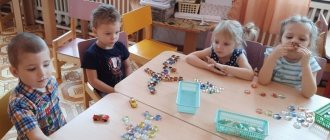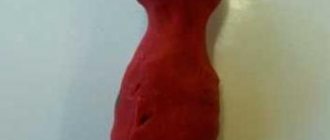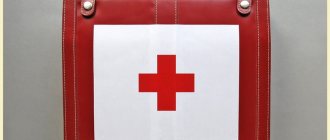“We are drivers” Game description: We are driving, driving a car (imitation of driving),
Transcript
1 We are drivers We are driving, we are driving a car (imitation of driving), We press the pedal (bend the leg at the knee, extend it), turn on the gas, turn it off (turn the imaginary lever with our hand towards ourselves, away from ourselves), We look intently into the distance (palm to the forehead ). The “janitors” count the drops (arms bent at the elbows, tilted left and right), right, left. Purity! The wind ruffles the hair (the hair flutters), We are drivers anywhere! (show thumb). “We are drivers” Description of the game: We are driving, we are driving a car (imitation of the movement of the steering wheel), We press the pedal (bend the leg at the knee, extend it), turn on the gas, turn it off (turn the imaginary lever with your hand towards yourself, away from you), We look intently into the distance (palm to forehead). The “janitors” count the drops (arms bent at the elbows, tilted left and right), right, left. Purity! The wind ruffles the hair (the hair flutters), We are drivers anywhere! (show thumb) Card 52 “Sailors and the Shark” Game description: Sailors are swimming and running around the entire hall! Let's not push! A shark is swimming, everyone aboard the ship! (3-4 times). Card 53 “Cosmonauts” Purpose: To develop children’s attention, dexterity, and imagination. Practice quick orientation in space. Game description: The contours of rockets are drawn along the edges of the site. The total number of seats in the rockets should be less than the number of children playing. In the middle of the platform, the astronauts, holding hands, walk in a circle, saying: Fast rockets are waiting for us. Let's fly to this one! For walks on the planets. But there is one secret in the game: Whatever we want, there is no room for latecomers. With the last words, the children let go of their hands and run to take their places in the rocket. Those who did not have enough space in the rockets remain at the cosmodrome, and those who are sitting in the rockets take turns telling where they are flying and what they see. After that, everyone stands in a circle again and the game repeats. During the flight, instead of talking about what they saw, children are asked to perform various exercises, tasks related to going into space, etc.
2 Card 54 “Colored cars” Purpose: To develop children’s attention, the ability to distinguish colors and act on a visual signal. Exercise children in running and walking. Game description: Children sit along the wall, they are cars. Each person is given a flag of some color. The teacher stands facing the players, in the center. In your hand there are 3 colored flags, according to the colors of the traffic light. Raises the flag, children with a flag of this color run around the playground in any direction, honking their horn as they go, imitating a car. When the teacher lowers the flag, the children stop, and at the signal “The cars are coming back!” — they walk towards their garage. Then the teacher raises a flag of a different color, but can raise 2 or all 3 flags together, then all the cars leave the garage. Card 55 “Train” Game description: Children stand in a column according to their height. The first child in the column is a “locomotive”, the rest are “cars”. After the teacher’s signal, the locomotive buzzes: “u-u-u”, at which time the children bend their arms at the elbows. After the locomotive whistles, children stretch their arms forward and say: “Choo,” and use their hands to imitate the movement of the wheels. They repeat this 3-4 times. In response to the teacher’s words: “The wheels are knocking,” the children take a step in place; when they hear the signal “let’s go,” they walk, gradually speeding up their pace, then run. When the teacher says: “bridge”, “tunnel” or “downhill” the train goes slowly, but “down the mountain” the train goes faster again. When the teacher raises the red flag, the train stops; when it's green, it moves on. The train approaches the station slowly and stops. The locomotive releases steam: “psh - sh...”. Card 56 “Pilots” Game description: Children are divided into 3-4 units. They stand in columns one after another behind the flight commander. The links are located in different places on the site, marked with colored flags - these are airfields. At the teacher’s signal “Pilots, prepare the planes for flight!” children run in different directions around the playground, each stop at their own plane, pour gasoline (lean over), start the engines (circle their arms in front of their chests), spread their wings (spread their arms to the sides) and fly (quickly run up in different directions around the playground). The planes remain in the air until the teacher’s signal “Landing!” After this signal, the commanders assemble their units (children form units as they run) and lead them to land at the airfields. The link that lands first wins. The game is repeated 4-5 times. Directions. It is advisable to use various attributes in the game. The teacher can change the flags that mark the airfields without the pilots noticing. Commanders must correctly land units at their airfields.
3 “Spring Flowers” Game description: children line up in a circle. The teacher is in the center of the circle (distance 1.5-2 m), he names the flower, if it is “spring”, then the child catches the ball and throws it back. If the flower is not “spring”, then the child does not catch the ball. Children who make a mistake are eliminated from the game. Instructions: before starting the game, clarify the names of the “spring” flowers. First, the teacher names a flower, then throws the ball. Card 29 “Cat and Mouse” Purpose: To develop in children the ability to quickly act on a signal, to walk while maintaining the shape of a circle. Practice running and catching. Description of the game: All players, except 2, stand in a circle, at arm's length, and join hands. The circle does not close in one place. This passage is called a gate. Two children playing are behind a circle, pretending to be a mouse and a cat. The mouse runs outside the circle and in the circle, the cat follows it, trying to catch it. The mouse can run into the circle through the gate and crawl under the arms of the children standing in the circle. The cat is just at the gate. The children walk in a circle and say: “Grey Vaska is walking with a fluffy white tail. Vaska the cat is walking. He sits down, washes himself, wipes himself with his paw, and sings songs. Vaska the cat will silently walk around the house and hide. Gray mice are waiting." After the words, the cat begins to catch the mouse. Card 30 “Birds and a cat” Purpose: To develop determination in children, to practice running and dodging. Game description: A circle is drawn on the ground or a cord with tied ends is placed. The teacher chooses a trap that becomes in the center of the circle. It's a cat. The rest of the birds are outside the circle. The cat is sleeping, the birds are flying into the circle for grains. The cat wakes up, sees the birds and catches them. All the birds fly out of the circle. The one touched by the cat is considered caught and goes to the middle of the circle. When 2-3 birds are caught, a new cat is chosen. Card 27 “Shaggy Dog” Purpose: to teach children to listen to the text and quickly respond to the signal Description of the game: A dog is selected, a hat is put on its head, and it squats. Children move towards him from the opposite end of the hall: Here lies a shaggy dog, with his nose buried in his paws. Quietly, peacefully, he lies, either dozing or sleeping, Let's go up to him and wake him up! And let's see what happens? After the last words, the children run away and the dog tries to catch them. Card 28
4 “Vaska the Cat” Game description: A cat is selected. He sits in the center, and the children dance around him with the words: The mice dance in a circle. A cat is sleeping on the bed. Quiet the mouse, don’t make noise. Don’t wake up Vaska the cat. Otherwise, the cat will wake up and break up the dance. Card 1 “We are funny guys.” Goal: Create conditions for active motor activity of children and increase the positive emotional state of children; consolidate the ability to participate in collective outdoor games, and demonstrate dexterity, speed, and coordination of movements. Description of the game: Lines are drawn on two opposite sides of the site, and several circles on the side. This is the driver's house. The players gather behind the line on one side of the court and say in chorus: We, funny guys, love to run and jump. Well, try to catch us! One, two, three catch! After the word “catch!” everyone runs to the opposite side of the site. The driver must catch one of the runners before he crosses the second line. The caught person stands in a circle around the driver's house. Then the children read the poems again and run across the playground in the opposite direction. After 2-3 attempts, count how many children there are. Card 4 “Toss-catch” Purpose: To teach children to compete. Practice throwing the ball with both hands from bottom to top and catching it. Description of the game: Children sit freely indoors or on the playground, each holding a ball in their hands. At the teacher’s signal: “Begin!” children throw the ball up and catch it. Everyone counts how many times they can catch the ball without dropping it. “At the bear in the forest” Goal: development of passive and active speech through work activity. Description of the game: a line is drawn at one end of the hall (area). This is the edge of the forest. Beyond the line, at a distance of 2-3 steps, a place for the bear is outlined. At the opposite end of the hall, the children's house is marked with a line. The teacher appoints one of the players to be a bear (you can choose a counting rhyme). The rest of the children are playing, they are at home. The teacher says: “Go for a walk.” Children head to the edge of the forest, pick mushrooms, berries, i.e. imitate the appropriate movements and say: “I take mushrooms and berries from the bear in the forest,
5 And the bear sits and growls at us.” The bear gets up with a growl, the children run away. The bear tries to catch (touch) them. He takes the caught one to himself. The game resumes. After the bear catches 2-3 players, a new bear is appointed or selected. The game repeats itself. Card 19 “Freeze” Purpose: to teach to understand a schematic representation of a person’s posture. Description of the game: Music plays, children perform different jumps around the hall, the teacher turns off the music and shows cards depicting different human poses. Children must imitate this pose. Anyone who does it wrong is eliminated from the game. Card 60 “Find yourself a partner” Game description: To play you need colored handkerchiefs according to the number of children. Half of the scarves are one color, the rest are a different color. Each child receives one handkerchief. At the signal (blow of the tambourine) the children run away. To the words “Find a pair!” Children who have identical scarves stand in pairs. If the child is left without a pair, the players say: “Vanya, Vanya (Kolya, Olya) don’t yawn, quickly choose a pair!” the game is repeated. Card 68 “Seine and Goldfish” Description of the game: Children put on goldfish hats and run in a circle, performing movements and repeating the words: “The fish play merrily in the blue sunny water, They will shrink, they will unclench, and they will bury themselves in the sand.” After the last words, the old man tries to catch them with a net with a hoop Card 75 “Flowers” Purpose: to consolidate knowledge about flowers (or any other objects, such as sports equipment), to improve reaction and speed qualities. Game description: each player chooses a flower for himself. By lot, the chosen flower begins the game. It calls any other flower, such as a poppy. Mac runs, and Rose catches up with him. Then the poppy can name any other flower. The winner is the one who has never been caught.
6 Card 76 “Through the stream” Game description: Two ribbons are placed along the length of the site at a distance of 1.5-2 m from one another - this is a “stream”. In four places of the stream, square boards were placed at a distance of cm from one another. These are “pebbles”. Children (3-4) marked by the teacher come to the stream and each stand in front of a pebble. At the teacher’s signal: “Cross the stream,” the children jump from board to board. The rest of the children sit on chairs and watch. Whoever stumbles and “gets his feet wet” goes to his place to “dry.” After all the children cross the stream, the game ends. The winner is the one who never hits the stream with his foot.



